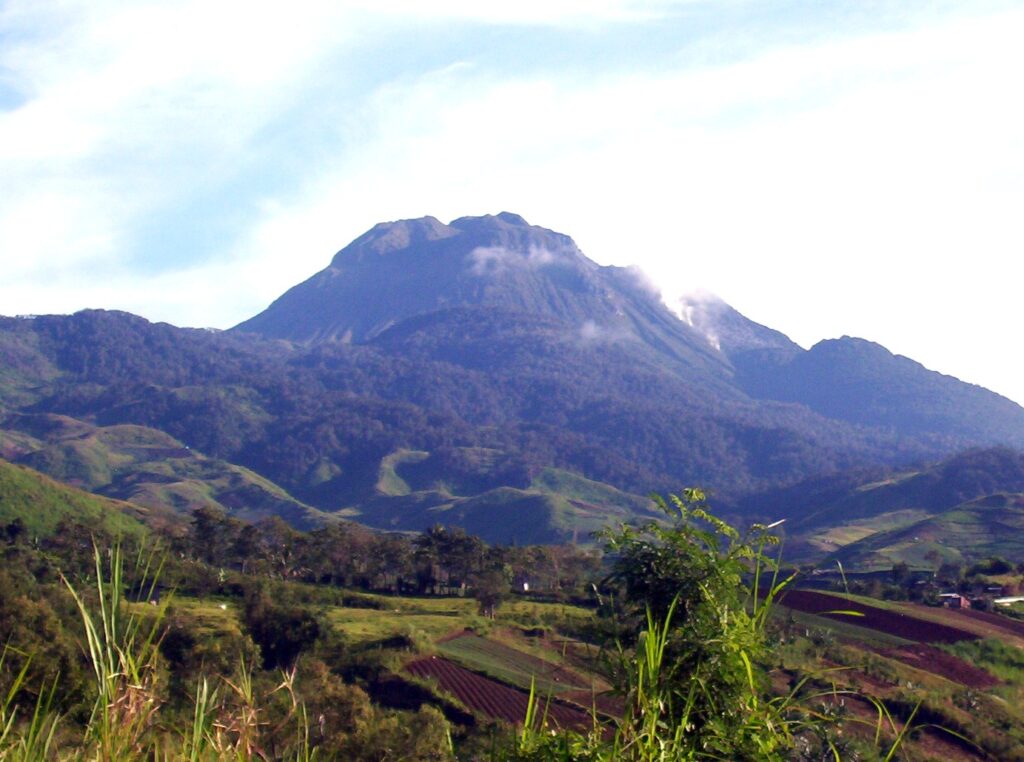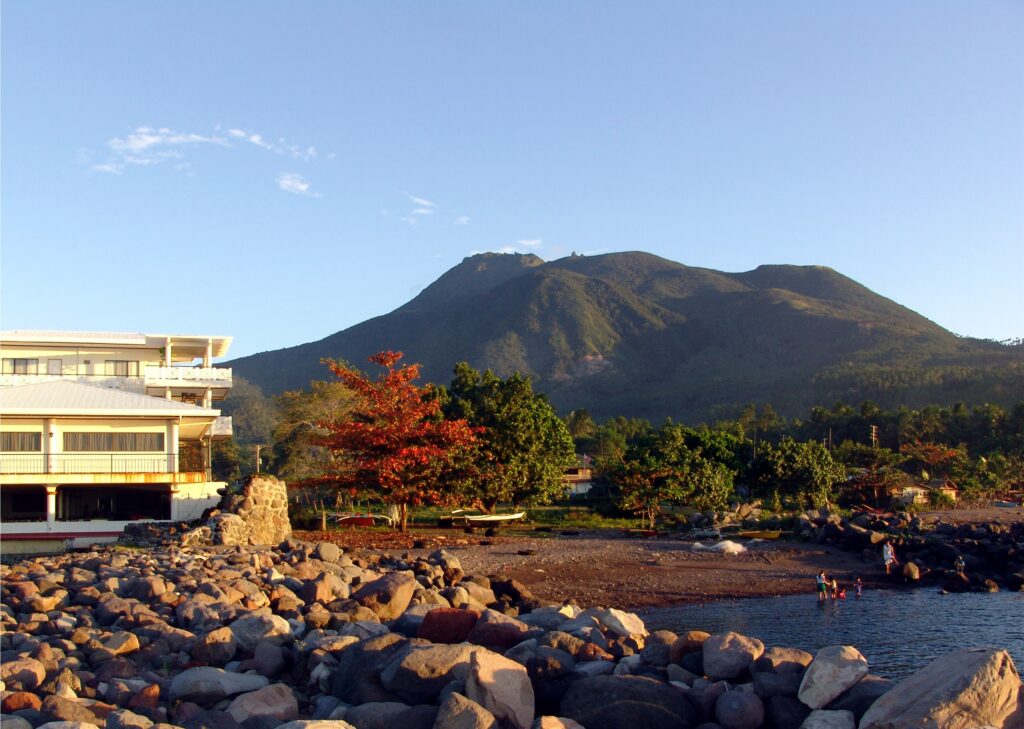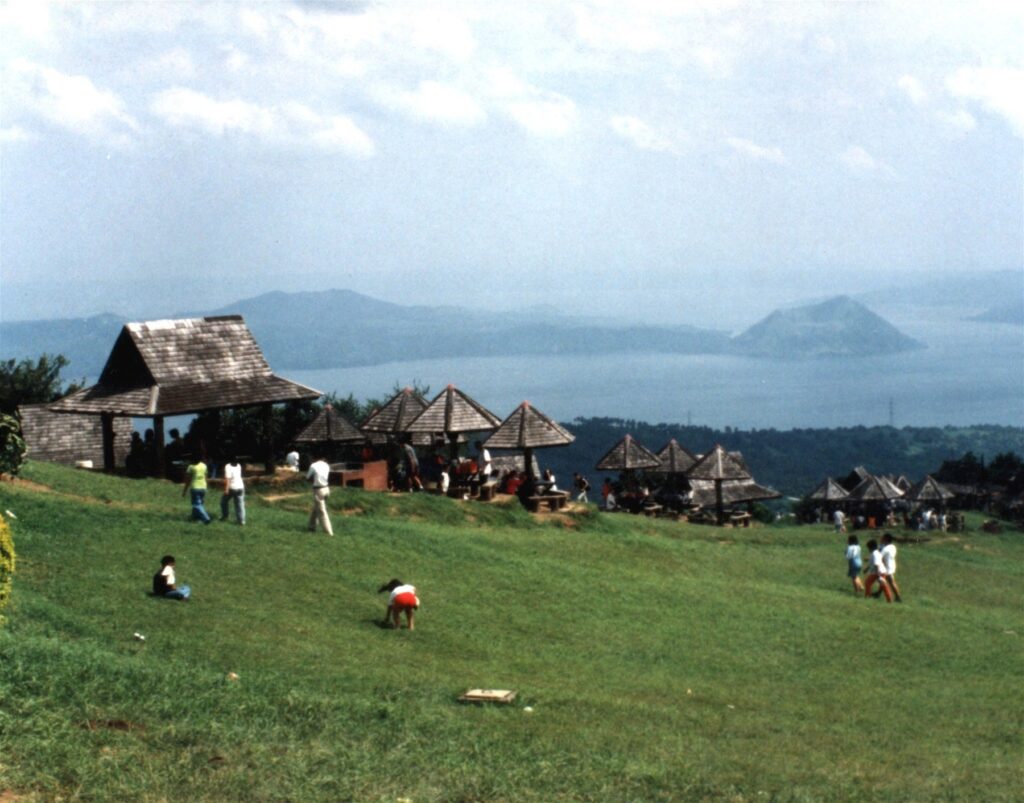Text and Photos by Henrylito D. Tacio
“Volcanoes are awesome manifestations of the fiery power contained deep within the Earth.” – National Geographic.
***
As you read this article, somewhere around the world, about 20 active volcanoes are erupting. That’s according to the website universetoday.com.
No one knows when a volcano will erupt. The last time Mount Pinatubo erupted was about 450 years ago. For a long span of time, people in Zambales province had almost forgotten that there was a volcano lurking to explode in their vicinity.
No one can blame them. The Pinatubo mountain was lush and teeming with trees. Farmers were planting various crops as the soil was fertile. Some people lived on the slopes of the mountain, but most settled in the nutrient-laden flatlands.
Then the sleeping giant was awakened from its deep slumber, and the eruption completely changed the lives of the people living near the volcano. Mount Pinatubo stood at 1,780 meters before it erupted on June 9, 1991. After the eruption, the volcano was reduced to only 1,400 meters. A chunk of more than 300 meters was sliced off the top.
During the picturesque eruption, volcanic ash and hot sand rained down in thick sheets over many towns, blanketing the rooftops of houses. But most of the vented materials were deposited on the slopes of Mount Pinatubo – waiting for another disaster to happen.
What was expected to happen really happened? Dislodged by rain, lahar (volcanic ash) washed away bridges and engulfed more lands. More than four thousand people have been killed by mudflows since the volcano erupted.
Mount Pinatubo is just one of the 200 volcanoes found in the Philippines. The country is located in what scientists call the “Pacific Ring of Fire,” a halo of seismic hotspots around the Pacific Ocean.
“In a large 40,000-kilometer horseshoe shape, it is associated with a nearly continuous series of oceanic trenches, volcanic arcs, and volcanic belts and plate movements,” Wikipedia points out.
Fortunately, only 21 volcanoes are considered active.
Scientists say a volcano is considered active if it has erupted sometime within the last 600 years. If a volcano has not erupted in 600 years, it is regarded as inactive (dormant).
There are also volcanoes that are considered extinct. “It is difficult to distinguish an extinct volcano from a dormant one,” an American volcano expert explains.
Extinct volcanoes are those that scientists consider unlikely to erupt again because the volcano no longer has a lava supply. Examples of extinct volcanoes are those located in Hawaii. The Edinburgh Castle in Scotland is famously located atop an extinct volcano.
Aside from Pinatubo, the active volcanoes in the country, according to the Philippine Volcanology and Seismology (Phivolcs) are Mayon in Legazpi City; Taal in Talisay, Batangas; Canlaon in Negros Oriental; Bulusan in Sorsogon; Smith, Didicas, Babuyan Claro and Camiguin de Babuyanes, all in Babuyan Island Group; Cagua in Cagayan; Banahaw in Laguna/Quezon; Iriga in Camarines Sur; Biliran in Biliran; and Iraya in Batanes.

Mount Apo 
Mount Hibok-Hibok 
Taal Volcano
In Mindanao, the active volcanoes are: Ragang and Matutum, both in Cotabato; Hibok-Hibok in Mambajao, Camiguin; Calayo in Valencia, Bukidnon; Bud Dajo on Jolo Island; Musuan in Bukidnon; and Makaturing in Lanao.
The Philippines is home to some of the most beautiful volcanoes. Mount Mayon in Albay is world-famous for its near-perfect cone. It has erupted almost 50 times. Its most violent and destructive eruption was in 1814, its ash and mudflows burying villages and towns around it.
With an altitude of 2,954 meters (9,692 feet), Mount Apo is indeed the country’s highest mountain. “A potentially-active volcano” is what some experts call Mount Apo. The date of its most recent eruption is unknown, and none are verified in historical times.
Among the most historical volcanoes in the country are Mount Canlaon and Mount Hibok-Hibok. Mount Canlaon, the only active volcano in the Visayas, has erupted 14 times. Its last eruption was during June to September 1978.
Mount Hibok-Hibok (it is called such because, people say, the ground shakes when you step on it) is also known as Catarman. Its most recent eruption was on December 4 and 6, 1953. Earlier eruptions were reported in 1897 and during 1848-1852.
The word “volcano” is derived from the name of Vulcano, a volcanic island in the Aeolian Islands of Italy whose name, in turn, originates from Vulcan, the name of a god of fire in Roman mythology.
Wikipedia shares this bit of information: Many ancient accounts ascribe volcanic eruptions to supernatural causes, such as the actions of gods or demigods. To the ancient Greeks, volcanoes’ capricious power could only be explained as acts of the gods, while 16th/17th-century German astronomer Johannes Kepler believed they were ducts for the Earth’s tears. One early idea counter to this was proposed by Jesuit Athanasius Kircher, who witnessed eruptions of Mount Etna and Stromboli, then visited the crater of Vesuvius and published his view of an Earth with a central fire connected to numerous others caused by the burning of sulfur, bitumen, and coal.
Actually, a volcano is a vent in the Earth from which molten rock (called magma) and gas erupt. The molten rock that erupts from the volcano (known as lava) forms a hill or mountain around the vent. The lava may flow out as a viscous liquid, or it may explode from the vent as solid or liquid particles.
Magmas with high gas and high viscosities are usually more explosive than those flowing from shield volcanoes. In many instances, these gas-rich magmas, experts say, are blown high into the air during an eruption. The magma falls as volcanic bombs, which accumulate around the vent and form steep-sided but relatively small cinder cones.
Most of the tallest volcanoes are composite volcanoes or stratovolcanoes. These form from a cycle of quiet eruptions of fluid lava followed by explosive eruptions of viscous lava. The fluid lava creates an erosion-resistant shell over the explosive debris, forming strong, steep-sided volcanic cones.
While volcanoes can be dangerous, they are not always destructive. After several years, volcanic ashes and other materials ejected in an eruption become fertile soil. The land then becomes a good area for farming.
“Remind me that the most fertile lands were built by the fires of volcanoes,” Andrea Gibson wrote in The Madness Vase.
Recently, volcanic areas have become important sources of geothermal energy. In fact, the Philippines is one of the very few countries in the world which use geothermal power plants.
Next to the United States, the Philippines has the second-highest geothermal power capacity in the world right now.
Although geologists are known to study the Earth, they also observe volcanoes. With the aid of seismographs and other instruments, they can predict volcanic eruptions weeks or even months ahead.
Phivolcs, a line agency of the Department of Science and Technology (DOST), is the government agency dedicated to providing information on the activities of volcanoes, earthquakes, and tsunamis, as well as other specialized information and services primarily for the protection of life and property and in support of economic, productivity, and sustainable development.
“Like ghosts and monsters, volcanoes can be scary when they erupt. They rumble, shake and spit out fire, steam, ashes, and rocks. But unlike ghosts and monsters, volcanoes are of this world. As such, they can be studied and understood,” said Dr. Raymundo S. Punongbayan, who headed Phivolcs from 1982 to 2003.

